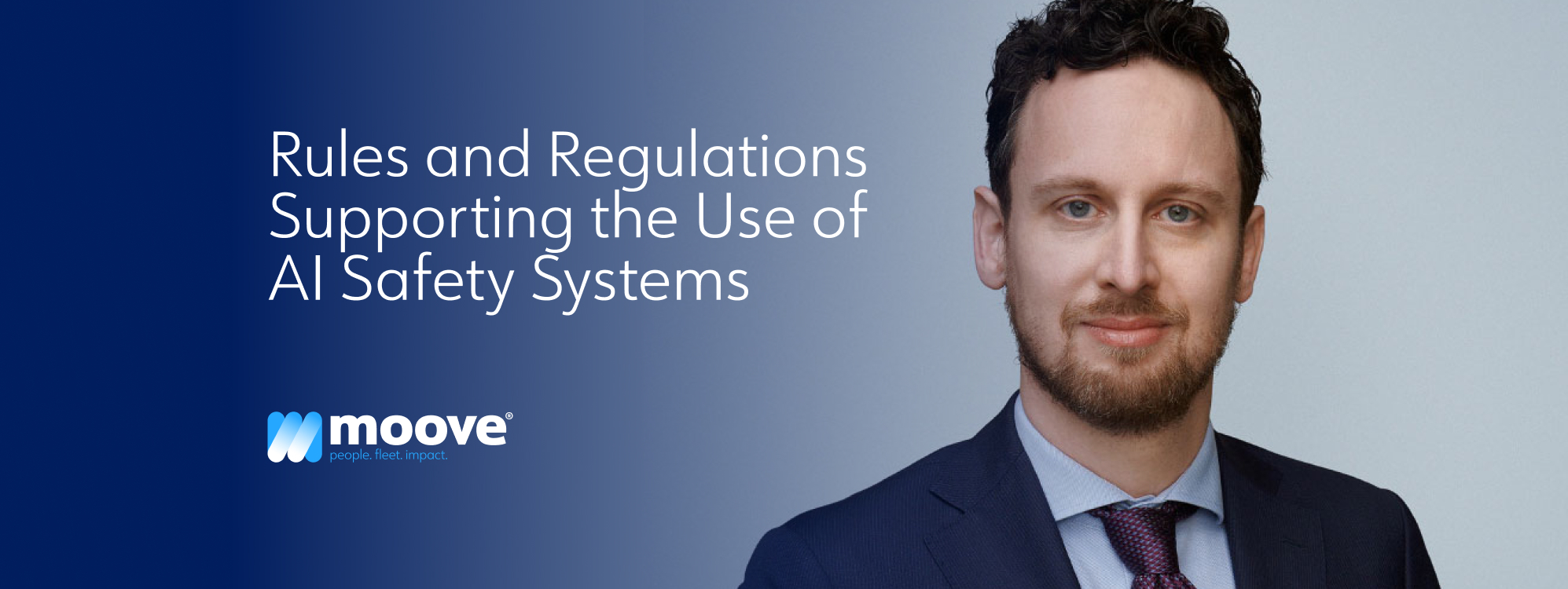
Rules and Regulations Supporting the Use of AI Safety Systems
AI safety systems are quickly becoming essential for modern fleet operations. But how do you make sure you're using them responsibly, and within the law? In Europe, privacy and AI legislation play a critical role in how these systems can be implemented. For many companies, this legal landscape can feel complex or even restrictive.
Whether you're a supplier or a fleet operator, understanding the rules is key to using AI camera technology effectively and compliantly. We spoke with Michael Reker, senior lawyer at Van Benthem & Keulen, about how regulation is shaping the future of AI in European fleets and how you can stay ahead without compromising on safety.
Data Privacy and the Responsible Use of AI
AI safety systems often use cameras that monitor the driver as well as the surrounding environment. These systems capture and process personal data, which means privacy must be carefully considered from the start.
Michael stresses the importance of defining responsibilities clearly: “The most important piece of legislation when implementing AI camera technology in vehicles is the GDPR. This regulation governs how personal data may be processed, which is relevant for both footage of drivers and other road users. A crucial aspect is the allocation of roles between the data controller, processor and sub-processor. Organisations must determine who carries which responsibilities and draw up agreements accordingly.”
Transparency is also critical. Companies must inform data subjects—such as drivers—about how their information will be used. Additionally, they must conduct a Data Protection Impact Assessment (DPIA). This process helps identify potential privacy risks and outline safeguards, such as blurring images or limiting the duration of data storage.
Michael adds: “As a data controller, you must clearly define the legal basis on which you justify the use of AI camera technology.”
European Legislation for High-Risk AI Systems
Not all AI systems are treated the same under European law. Many AI camera solutions used in fleet safety fall under the high-risk category. This is due to their potential impact on the rights and freedoms of individuals. As a result, these systems are subject to stricter rules and responsibilities.
Michael explains:
“The European AI Act plays a key role in this. All parties involved in the chain must engage with it. The customer implementing the system must ensure that they have access to system logs and that users are properly trained in handling an AI system, what we call AI literacy. Then there are the suppliers, in the form of providers, importers or distributors, who must comply with the legal requirements set out in the AI Act. What we see there is a strong focus on product safety.”
He notes that the CE marking, already familiar in other sectors, will also apply to AI camera systems:
“The concept of CE marking, which we’ve known for many years, will also be applied to high-risk systems such as AI camera technology.”
Beyond the AI Act, two other regulations are shaping this space. The Cyber Resilience Act ensures cybersecurity for connected devices like smart cameras, while the Data Act grants individuals rights to access and transfer their data. This means drivers must be able to retrieve their driving data and, if needed, move it to another platform or provider.
Finding the Legal Foundation for Fleet Safety
Ultimately, the purpose of AI safety systems is to improve driver safety. To justify their use, companies must demonstrate that this goal serves a legitimate interest and that individual privacy is safeguarded.
Michael points out:
“Under current legislation, employers must be able to demonstrate that the use of AI cameras serves a legitimate interest, such as road safety, and that driver privacy is safeguarded as much as possible. If you can use data analysis to show that overall fleet safety improves when drivers are alerted not to use their phones while driving, then this should be justifiable under the law. However, if you intend to use the data for purposes beyond safety alone, you must then ask yourself what legal basis supports that use.”
He also stresses the importance of internal alignment. Organisations need to be clear about what they want to achieve with AI technology and how the data will be handled. The DPIA helps to answer questions like: What is the system doing? What is the purpose? Where is the data going?
Michael provides several implementation scenarios.
In its simplest form, the system could issue warnings without storing or sharing data. At the other end of the spectrum, the system might record all activity and transmit it to a central dashboard. A more balanced approach would involve recording footage only in predefined high-risk situations and then sharing that data with the fleet manager.
“This already reflects a privacy-conscious system design,” he says.
“But what matters most is that drivers are always informed about what is happening, to help reduce potential privacy concerns.”
Want to Implement AI Safety Systems With Confidence?
The legal framework around AI and data use can be complex. However, with the right knowledge and a clear implementation strategy, you can protect driver privacy while still achieving your safety goals. Regulations are not a barrier. They’re an opportunity to build systems that are secure, compliant, and trusted by your team. Download the free Safety First e-book to explore expert guidance, regulatory insights and real-world examples that help you take the next step.


